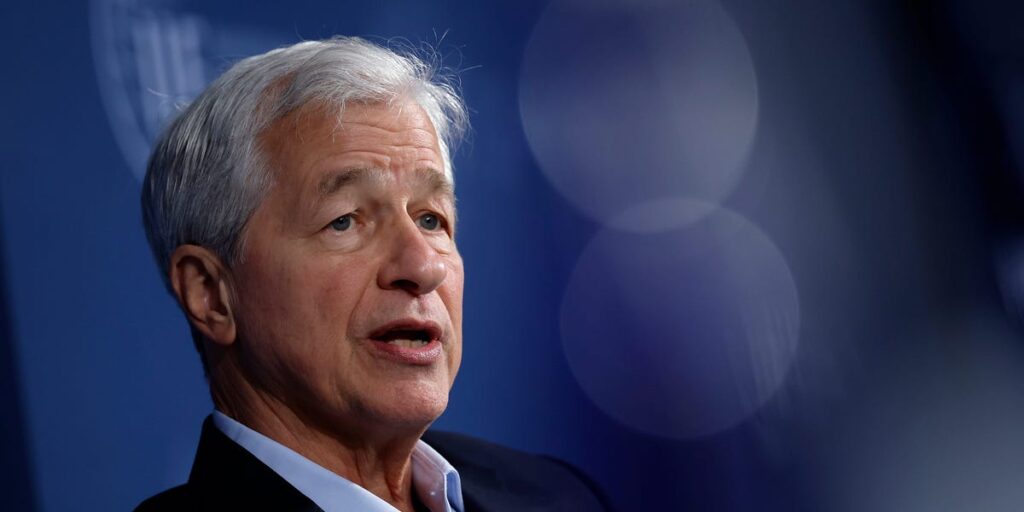JPMorgan Chase CEO has warned that financial markets are underestimating the risk of interest rate hikes in the US, calling the prevailing sense of calm “complacency” in the face of mounting inflationary pressures.
Speaking at an event hosted by Ireland’s foreign ministry in Dublin on Thursday, Dimon said he believes there’s a 40 to 50% chance the Federal Reserve will raise rates again during the current cycle.
“I think the possibility of those higher rates is higher than anybody else,” he said. “The market is pricing a 20% chance. I would price in a 40-50% chance. I would put that as a cause for concern.”
Dimon cited a confluence of inflationary forces fueling his outlook: the Trump administration’s new wave of tariffs, the government’s expanding fiscal deficit, and restrictive immigration policies.
He also pointed to broader structural drivers like global trade realignment and demographic changes, which he said are “kind of inflationary.”
His remarks come as Wall Street continues to hover near record highs. Many investors are betting the Fed is done with rate hikes and is more likely to cut than raise rates in the near future.
But Dimon, who has led the biggest US bank for nearly two decades and is widely regarded as one of the most influential voices in corporate America, suggested that markets may be looking at the wrong signals.
“Unfortunately, I think there is complacency in the market. There is a lot of happy talk,” he said. “One day, you may see a different reaction.”
Dimon also expressed skepticism about the clarity of economic indicators, calling real-time US data “totally impossible to read.”
The comments also arrive at a moment of renewed global uncertainty, with the Trump White House pursuing an aggressive trade agenda and pressuring the Fed to cut rates even as inflation shows signs of picking up.
Why Dimon’s warning matters now
Dimon’s cautionary remarks come as financial markets bet heavily on the Fed cutting rates later this year, with expectations buoyed by soft inflation prints and a strong labor market.
But a wave of new inflationary threats could upend that narrative.
At the center is Trump’s expanding tariff agenda. A 10% blanket import tariff, plus additional “reciprocal” tariffs targeting specific countries and goods, has already begun filtering through the economy.
Major brands, including Nike, Walmart, and Macy’s, have announced price hikes in response, with CEOs warning that rising costs will be passed down to consumers.
Luxury players like Ferrari and Hermès, as well as household names like Ford, Conagra, and Best Buy, are or may also implement price increases.
Fed Chair Jerome Powell explicitly linked the hold on rate cuts to tariff uncertainty at a panel last week, saying the central bank’s inflation forecasts “went up materially” after Trump’s policies were unveiled.
Powell reiterated that the Fed remains in wait-and-see mode until the real impact of these tariffs on inflation becomes clear.
He’s also acknowledged the difficulty in interpreting real-time economic data, echoing Dimon’s frustration with the “impossible-to-read” indicators.
Economists warn that the inflationary effects of tariffs could be lagging, showing up more clearly in late summer and fall.
That means the calm markets we are enjoying now may not last. Morgan Stanley and the OECD both flagged tariff-driven inflation as a major risk to growth, with the latter slashing its US GDP forecast from 2.8% to 1.6% for 2025.
Read the full article here


